Your guide to poison ivy, oak and sumac
Poisonous plants! Runaway?! Okay, poison ivy, oak, and sumac aren’t actually “poisonous”, and you don’t need to abandon your hike the moment you see it. But, by knowing what to look for and how to avoid contact, you can safely enjoy the great outdoors. All three of these plants have an oily resin called urushiol that is found on their leaves, stems, and roots. Most people (about 85%) are allergic to urushiol, and when it comes in contact with the skin will develop an itchy, red, blistering rash. This rash can last for weeks and is very uncomfortable. So, how can you avoid this unwanted rash? Your best line of defense is knowing what to look for and how to protect yourself.
Poison ivy vs. poison oak vs. poison sumac
What does poison ivy look like?
Poison ivy has three almond-shaped leaflets growing at the end of each stem. The leaflets have a smooth surface and can be yellow to light green, dark green, or bright orange/red in color. Mature plants have leaves that are somewhat shiny. Poison ivy can grow as a shrub or a vine, including climbing vines that grow up trees. The color and shape of the leaves can vary by location, but poison ivy will always have three leaflets.
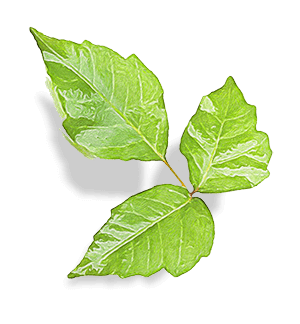
Where does poison ivy grow?
Poison ivy is common throughout most of the U.S., with the exception of Alaska, Hawaii, and parts of the West Coast. Poison ivy typically grows in wooded areas, especially at the edges where there is some sun (like trails and roads!).
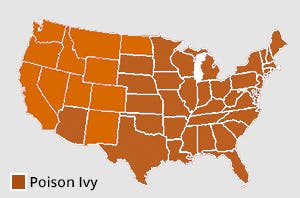
What does poison oak look like?
Like poison ivy, poison oak has three leaflets per stem, but these look more like the leaves of an oak tree, with lobed edges and tiny hairs on top. They can be green, yellow-green, reddish, or pink depending on the time of year. Poison oak can grow as a vine or a shrub.
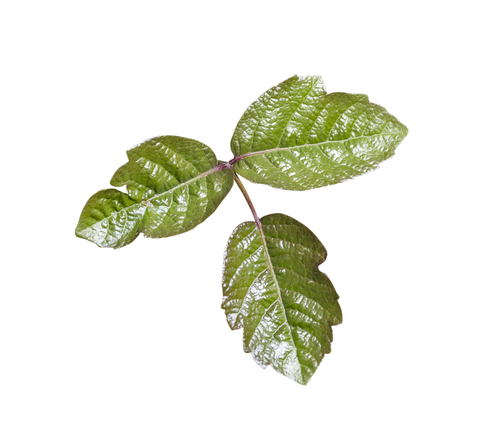
Where does poison oak grow?
Poison oak grows along the West Coast and in the Southeast and is rarely found in the Midwest. The southeastern variety (Atlantic poison oak) looks very similar to poison ivy. Poison oak often grows in wooded areas, grasslands, and coastal scrub areas.
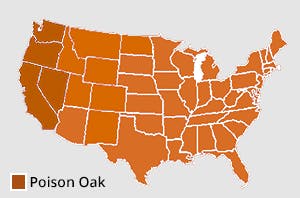
What does poison sumac look like?
Poison sumac looks quite different from poison ivy and oak, with 7 to 13 small leaflets growing on each stem, along with clusters of small green berries. The leaves are oval/oblong with smooth edges and a pointed end. The stems are reddish and the leaves are green, often with a reddish tint. Poison sumac grows as a shrub or small tree.
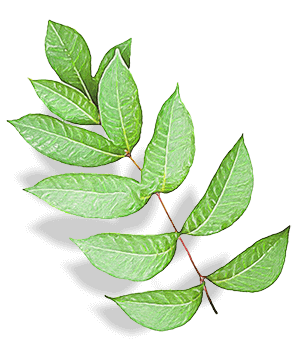
Where does poison sumac grow?
Poison sumac grows in wet, swamp-like areas in the eastern U.S. It is often found in wetlands and along the banks of ponds, streams, and rivers. It can only grow in wet and clay soil and is rarer than poison ivy or oak.
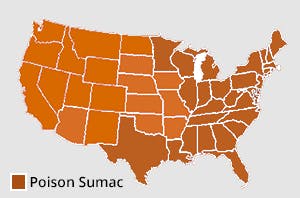
What are the symptoms of poison ivy, oak, and sumac?
The symptoms from contact with poison ivy, poison oak, and poison sumac are the same! They all occur as an allergic reaction to urushiol, which causes a condition called urushiol-induced contact dermatitis. The skin experiences redness, itching, swelling, and blisters. The symptoms will not appear immediately; they typically appear 24-72 hours after contact with the plant and last 2-3 weeks. The rash is not contagious; you can only get it from contact with the plant’s oil.
Should I get medical treatment?
The rash typically goes away on its own, but there are home remedies to help treat poison ivy, oak, and sumac. If you seek medical treatment, a provider can recommend one of several prescription treatments that can help the rash clear up faster, including antihistamines, steroids, and topical creams. You should seek medical attention right away if you are experiencing any of these symptoms:
- Widespread rash covering large parts of the body
- Rash affecting your eyes, mouth, or genitals
- Uncontrolled swelling of the skin
- Blisters that ooze pus
- Development of a fever
- If you inhaled the smoke from burning plants
How to avoid poison ivy, oak, and sumac
Wearing proper clothing when you are in areas that may have poison ivy, poison oak or poison sumac is the best way to prevent contracting the rash. Long sleeves, gloves, and pants tucked into boots will protect your skin from contact with the plants. It’s a good idea to have a pair of outdoor shoes or boots that you keep outdoors. Be sure to wash any clothes you wear outdoors, especially if they have come into contact with unidentified plants and trees. If your pets come into contact with any of these plants, be sure to wash them too. Animals are typically not sensitive to the oil, but it can stay on their fur and cause a reaction when touched.
Poison ivy, oak, and sumac plants are very common and can be found nearly everywhere in the U.S., so you should take care whenever you are camping, hiking, gardening, or enjoying other outdoor activities where plants and trees grow. Become familiar with the plants in the area and know what to look out for. When hiking or camping, be sure to walk on clear pathways and set your campsite in areas clear of these plants.
Written by Sarah Thebarge, Physician Assistant


